What's New
Displaying results 1491 - 1500 of 4913

Resource | Publications,
The National Objectives for Health (NOH) 2017–2022 serves as the medium-term roadmap of the Philippines towards achieving universal healthcare (UHC). It specifies the objectives, strategies and targets of the Department of Health (DOH) FOURmula One Plus for Health (F1 Plus for Health) built along the health system pillars of financing, service delivery, regulation, governance and performance accountability. This ultimately leads to the three major goals that the Philippine Health Agenda aspires for: (1) better health outcomes with no major disparity among population groups; (2) financial risk protection for all especially the poor, marginalized and vulnerable; and (3) a responsive health system which makes Filipinos feel respected, valued and empowered.
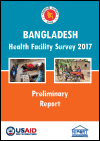
Resource | Publications,
The 2017 Bangladesh Health Facility Survey (BHFS) is the fourth nationally representative health facility survey in Bangladesh and follows earlier surveys in 2009, 2011, and 2014. The focus is on formal health sector facilities: public, private (at least 20 beds), and nongovernmental.
The 2017 BHFS provides information on the availability and readiness of services for maternal, newborn, and child health; family planning services; selected non-communicable diseases, including diabetes and cardiovascular disease; and tuberculosis. Information was collected from 1,524 health facilities and 5,400 health providers.
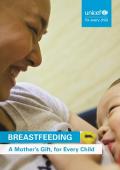
Resource | Publications,
Breastfeeding is among the most effective ways to protect maternal and child health and promote healthy growth and optimal development in early childhood.
This report from UNICEF shares new analysis on breastfeeding practices around the world and sets out key recommendations for governments, the private sector, civil society and communities in low-, middle- and high-income countries to increase breastfeeding rates. The report finds that more than 1 in 5 babies in high-income countries are never breastfed, compared to 1 in 25 in low- and middle-income countries.
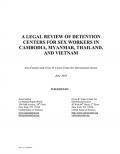
Resource | Laws and Policies,
At the request of Asia Catalyst, the Cyrus R. Vance Center for International Justice worked with two law firms and four local offices of these law firms to conduct a literature review on the legal provisions governing police arrests and compulsory detention of sex workers in Cambodia, Myanmar, Thailand, and Vietnam. Based on extensive research on the laws, regulations, and procedures available.
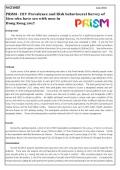
Resource | Fact Sheets,
Men having sex with men (MSM) have continued or emerged to account for a significant proportion of newly acquired HIV infection in many areas around the world, including Hong Kong. The first PRiSM (HIV prevention and risk behavioural survey of men who have sex with men in Hong Kong) study was conducted in 2006. It was the first community-based MSM and HIV study of its kind in Hong Kong. Designed also as a regular public health surveillance programme to track the epidemic and inform intervention, the survey was repeated in 2008 and 2011. Special Preventive Programme of the Department of Health (DH) conducted this fourth round of PRiSM from April to September 2017. The study aims to update on the HIV prevalence among MSM in Hong Kong, and inform on HIV/STIs preventive interventions and the profile of risk behaviours of local MSM.
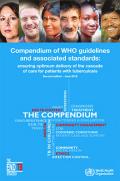
Resource | Guidelines,
The Compendium has been developed as a clear and concise instrument to facilitate the understanding and planning of delivery of high-quality care for everybody affected by TB. It incorporates all recent policy guidance from WHO; follows the care pathway of persons with signs or symptoms of TB in seeking diagnosis, treatment and care; and includes key algorithms and cross-cutting elements that are essential to a patient-centered approach in the cascade of TB care.

Resource | Publications,
This report details key results achieved in 2017 by UNICEF and partners – including children and young people themselves – and looks to the strategic challenges ahead. Against a backdrop of widespread conflict, instability and displacement, the report highlights UNICEF’s efforts to advance innovation, efficiency, transparency and financial stewardship in 2017. It also takes note of successful advocacy activities focused on child survival and health, early childhood development, violence against children, and child migrants and refugees. The report demonstrates UNICEF’s commitment to investing in the rights of excluded and disadvantaged children and young people, and providing them with opportunities to grow up healthy, educated and protected.

Resource | Publications,
The report sets out the status of women’s, children’s and adolescents’ health, and on health systems and social and environmental determinants. Regional dashboards on 16 key indicators highlight where progress is being made or lagging. There is progress overall, but not at the level required to achieve the 2030 goals. There are some areas where progress has stalled or is reversing, namely neonatal mortality, gender inequalities and health in humanitarian settings. The report also highlights new evidence with a special focus on early childhood development as a foundation for health and well-being across the life course. There are new estimates on the causes of death in children older than 5 years; most are preventable. Each section of the report highlights strategic priorities, interventions and approaches that could help countries address challenges and accelerate progress.
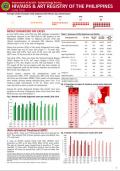
Resource | Fact Sheets,
In June 2018, there were 993 new HIV antibody seropositive individuals reported to the HIV/AIDS and ART Registry of the Philippines (HARP) [Table 1]. Eighteen percent (174) had clinical manifestations of advanced HIV infection (WHO clinical stage 3 or 4) at the time of diagnosis.
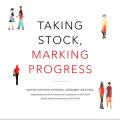
Resource | Publications,
This brochure highlights some of the key remarks made by Member States at this year’s gathering on the state of the worldwide response to HIV. While much progress has been made, there is a clear agreement that we still have a long way to go. The disproportionate effect of the HIV epidemic on young women and adolescent girls, and the slow uptake of HIV services by men and boys, are but a few of the challenges that need to be addressed.





